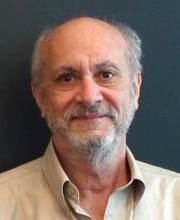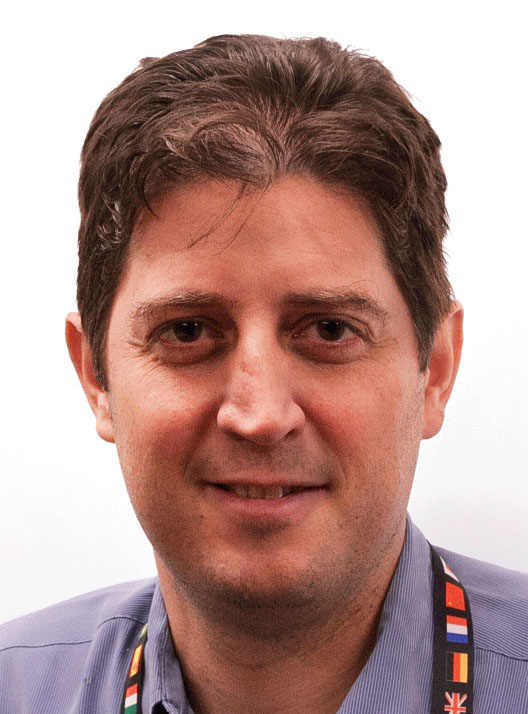Symposium Schedule | June 5-8
Tuesday, June 5
| Time and Location | Event |
|---|---|
| 7:30 a.m. - Rawls 2nd floor | Registration table opens (outside of RAWL 2070) |
| 8:30 - 11:30 a.m. | Workshops - Part 1 |
| 11:30 a.m. - 1:00 p.m. | Lunch Break (on your own) |
| 1:00 - 4:00 p.m. | Workshops - Part 2 |
Wednesday, June 6
|
Time and Location |
Event |
|---|---|
|
7:30 a.m. East Foyer |
Registration table opens |
|
8:30 - 9:30 a.m. Fowler Hall, Stewart Center |
 James Berger Abstract: There is a Society of Imprecise Probability (SIPTA). At their annual meeting last July, I gave this talk to illustrate some of the methods Bayesians use to deal with imprecise probability. The illustrations considered include dealing with interval valued probabilities, the p-value problem, optimal normal hierarchical Bayesian analysis, and uncertainty quantification of complex computer models. Many of the ideas behind Bayesian methods for dealing with imprecise probability arose from Herman Rubin, so this talk is also given in honor of his enduring legacy. |
|
9:30 - 10:00 a.m. STEW 218 |
Break / Coffee |
|
10:00 a.m. - 12:00 p.m. |
Session 1: In Honor of John Deely (co-organizers: Bruce Craig and Wesley O. Johnson) - STEW 214 AB
|
|
12:00 - 1:30 p.m. |
Lunch Break (on your own) |
|
1:30 - 3:30 p.m. Afternoon Technical Sessions |
Session 4: Big Data Theory and Computation (organizer: Guang Cheng) - STEW 214 CD
|
|
3:30 - 4:00 p.m. STEW 218 |
Break / Coffee |
|
4:00 - 5:00 p.m. Fowler Hall, Stewart Center |
Tony Cai Abstract: In the conventional statistical framework, the goal is developing optimal inference procedures, where optimality is understood with respect to the sample size and parameter space. When the dimensionality of the data becomes large as in many contemporary applications, the computational concerns associated with the statistical procedures come to the forefront. A fundamental question is: Is there a price to pay for statistical performance if one only considers computable (polynomial-time) procedures? After all, statistical methods are useful in practice only if they can be computed within a reasonable amount of time. In this talk, we discuss the interplay between statistical accuracy and computational efficiency in two specific problems: submatrix localization and sparse matrix detection based on a noisy observation of a large matrix. The results show some interesting phenomena that are quite different from other high-dimensional problems studied in the literature. |
|
5:00 - 5:15 p.m. |
Break |
|
5:15 - 6:30 p.m. STEW 218 |
Posters/ Reception |
Thursday, June 7
|
Time and Location |
Event |
|---|---|
|
8:00 a.m. East FoyerStewart Center |
Registration table opens |
|
8:30 - 9:30 a.m. Fowler Hall, Stewart Center |
Peter Bühlmann Abstract: Heterogeneity in potentially large-scale data can be beneficially exploited for causal inference and novel robustness. The key idea relies on invariance and stability across different heterogeneous regimes or sub-populations. What we term as "anchor regression" opens up new insights and connections between causality and protection (robustness) against worst case perturbations in prediction problems. We will discuss the methodology and some applications. |
|
9:30 - 10:00 a.m. STEW 218 |
Break / Coffee |
|
10:00 a.m. - 12:00 p.m. |
Session 5: Big Data in Plant Science I (co-organizers: Min Zhang and Jianming Yu) - STEW 214 AB
Session 6: Nonparametric Bayes: Big Models for Big Data (organizer: Vinayak Rao) - STEW 214 CD
|
|
12:00 - 1:30 p.m. |
Lunch Break (on your own) |
|
1:30 - 3:30 p.m. Afternoon Technical Sessions |
Session 8: Big Data in Plant Science II (co-organizers: Min Zhang and Jianming Yu) - STEW 214 AB
Session 9: In Memory of Herman Rubin and His Contributions (organizer: Anirban DasGupta) - STEW 202
|
|
3:30 - 4:00 p.m. STEW 218 |
Break / Coffee |
|
4:00 - 5:00 p.m. Fowler Hall, Stewart Center |
Xihong Lin Abstract: Massive ‘ome data, including genome, exposome, and phenome data, are becoming available at an increasing rate with no apparent end in sight. Examples include Whole Genome Sequencing data, large-scale remote-sensing satellite air pollution data, digital phenotyping, and Electronic Medical Records. The emerging field of Health Data Science presents statisticians with many exciting research and training opportunities and challenges. Success in health data science requires strong statistical inference, integrated with computer science and information science. Examples include signal detection, network analysis, integrative analysis of different types and sources of data, and incorporation of domain knowledge in health data science method development. In this talk, I discuss some of the challenges and opportunities, and illustrate them using high-dimensional testing of dense and sparse signals for whole genome sequencing analysis, integrative analysis of different types and sources of data, and analysis of pleiotropy using biobanks and Electronic Medical Records (EMRs). |
Friday, June 8
|
Time and Location |
Event |
|---|---|
|
8:00 a.m. East Foyer |
Registration table opens |
|
8:30 - 9:30 a.m. Fowler Hall, Stewart Center |

Donald Rubin Morning Plenary Essential concepts of causal inference — a remarkable history Abstract: I believe that a deep understanding of cause and effect, and how to estimate causal effects from data, complete with the associated mathematical notation and expressions, only evolved in the twentieth century. The crucial idea of randomized experiments was apparently first proposed in 1925 in the context of agricultural field trails but quickly moved to be applied also in studies of animal breeding and then in industrial manufacturing. The conceptual understanding seemed to be tied to ideas that were developing in quantum mechanics. The key ideas of randomized experiments evidently were not applied to studies of human beings until the 1950s, when such experiments began to be used in controlled medical trials, and then in social science — in education and economics. Humans are more complex than plants and animals, however, and with such trials came the attendant complexities of non-compliance with assigned treatment and the occurrence of “Hawthorne" and placebo effects. The formal application of the insights from earlier simpler experimental settings to more complex ones dealing with people, started in the 1970s and continue to this day, and include the bridging of classical mathematical ideas of experimentation, including fractional replication and geometrical formulations from the early twentieth century, with modern ideas that rely on powerful computing to implement aspects of design and analysis |
|
9:30 - 10:00 a.m. STEW 218 |
Break / Coffee |
|
10:00 a.m. - 12:00 p.m. |
Session 11: Deep Neural Nets, Scalable Computing and Finance (organizer: Kiseop Lee) - STEW 202
Session 12: Precision Medicine (organizer: Lingsong Zhang) - STEW 214 CD
|
|
12:00 - 1:30 p.m. |
Lunch Break (on your own) |
|
1:30 - 3:30 p.m. Afternoon Technical Sessions |
|
|
3:30 - 4:00 p.m. STEW 218 |
Break / Coffee |
|
4:00 - 5:00 p.m. Fowler Hall, Stewart Center |
Guy Lebanon Abstract: I will discuss several challenges that are of critical importance to the tech industry and currently receive little attention in the research community. Among these challenges are selection and composition of box-art images, producer-consumer marketplaces in newsfeeds, and modeling long-term effects in e-commerce. After presenting the challenges I will discuss several possible solutions, and ways in which the research community can help out. |
|
6:00 - 11:00 p.m. PMU South Ballroom |
50th Anniversary Reception and Banquet |



